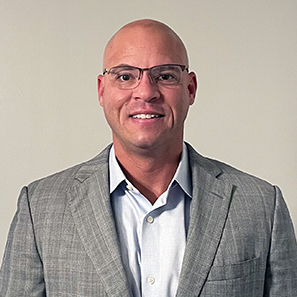
Education
- Postdoctoral Fellow, Vanderbilt University, 2011-2017
- PhD, North Carolina State University, 2011
- BS, Eastern Kentucky University, 2004
Research
Research in the Thompson lab lies within the context of mechanistic enzymology and protein structural/biophysical chemistry. In essence, we will use a chemistry approach to address key problems in biology and biophysics. Students and postdocs in our group will receive training in a combination of biochemical and biophysical techniques, chemical biology, spectroscopy (Raman and EPR), and structural biology (X-ray and neutron crystallography). We are currently interested in a number of projects ranging from antibiotic resistance to protein electron transfer.
1. New Strategies to Combat Fosfomycin Resistance.
The treatment of bacterial infections is compromised by the spread of multidrug-resistant (MDR) and extensively drug-resistant (XDR) pathogens. New strategies to combat resistant as well as emerging bacteria are urgently needed to limit further development of antimicrobial resistance. Combining currently approved antibiotics with resistance neutralizing agents is a promising direction. The overall goal of this research project is to develop effective front-line antimicrobial strategies from an approved, safe, and broad-spectrum antibiotic so newer antimicrobials, as well as final-option drugs, can be held in reserve to minimize emerging resistance. Fosfomycin is effective against both Gram-negative and Gram-positive pathogens and represents a promising candidate for developing a front-line agent. Resistance to fosfomycin arises from fosfomycin-modifying enzymes of the Vicinal Oxygen Chelate (VOC) superfamily. The principle role of VOC enzymes is to detoxify endogenous and xenobiotic compounds, and genes encoding VOC fosfomycin resistance enzymes have been identified in almost all of the most drug-resistant Gram-negative and Gram-positive pathogens and in Mycobacteria. FosB is the principle VOC fosfomycin-modifying enzyme of methicillin-resistant Staphylococcus aureus (MRSA). It covalently attaches bacillithiol (BSH) to fosfomycin, inactivating the antibiotic. FosB knockout strains of MRSA demonstrate significantly increased susceptibility to fosfomycin, identifying suppression of the enzyme as a potential therapeutic strategy. We will elucidate the structural basis of fosfomycin resistance in MRSA, identify and develop new lead compounds to combat fosfomycin resistance in Gram-positive bacteria, and evaluate the efficacy of our new strategies in other pathogenic organisms.
2. Investigating the Mechanism of Electron Transfer in DNA Processing Enzymes.
I am fascinated by the ability of proteins to shuttle electrons, and recently I have been involved in studies to understand the role of protein electron transfer in [4Fe4S] cluster containing DNA processing enzymes. It is now established that the main enzymes involved in human DNA replication, DNA primase and pols α, δ, and ε, all contain [4Fe4S] clusters, but the function of these clusters in DNA replication has remained unclear. Recent biophysical and electrochemical studies of human DNA primase suggest that the redox property of the [4Fe4S] cofactor serves as an on/off switch for DNA binding and that the switch is triggered via DNA charge transport. Charge transport through duplex DNA provides a mechanism for signaling between redox active DNA processing enzymes. However, in human DNA primase, the [4Fe4S] cluster is ~25 Å away from the DNA binding domain making direct electron transfer from the cluster to the DNA virtually impossible. We have shown that a bridge of three conserved tyrosines, Y309, Y345, and Y347, creates a charge transfer pathway from the [4Fe4S] cluster to the DNA binding region. Mutation of each tyrosine to phenylalanine disrupts the electron transport properties and enzymatic function while preserving the overall structure and DNA binding affinity. These results provide the initial evidence that electron transport in human DNA primase occurs via a hole/radical tunneling mechanism along the chain of redox active tyrosine residues. The overall goal of this research project is to elucidate the mechanism of electron transfer in human DNA primase. We will apply rapid flash/freeze-quench kinetics coupled to EPR spectroscopy to determine the electron transfer pathway from DNA to the [4Fe4S] cluster and, establish a primary protocol for tracking electron transfer in other [4Fe4S] cluster DNA processing enzymes.
Selected Publications
Thompson, M.K.; Chazin, W.J. “Functional Dynamics of Human DNA Primase Initiation.” 2017. In Preparation
Thompson, M.K.; Ehlinger, A.C.; Chazin, W.J. “Analysis of Functional Dynamics of Modular Multi-Domain Proteins by SAXS and NMR.” Methods in Enzymology. 2017. In Press. Available Online.
O’Brien, E.; Holt, M.E.; Thompson, M.K.; Salay, L.E.; Ehlinger, A.C.; Chazin, W.J.; Barton, J.K. “The [4Fe4S] Cluster Functions as a Redox Switch in Human DNA Primase Using DNA Charge Transport.” Science. 2017. 355(6327), 1789.
Thompson, M.K.; Keithly, M.E.; Sulikowski, G.A.; Armstrong, R.N. “Diversity in the Fosfomycin Resistance Proteins.” Persp. in Sci. 2015. 4, 17-23.
Thompson, M.K.; Keithly, M.E.; Goodman, M.C.; Hammer, N.D.; Cook, P.D.; Jagessar, K.L.; Harp, J.; Skaar, E.P.; Armstrong, R.N. “Structure and function of the genomically-encoded fosfomycin resistance enzyme, FosB, from Staphylococcus aureus.” Biochem.2014. 53(4), 755–765.
Thompson, M.K.; Keithly, M.E.; Harp, J.; Cook, P.D.; Jagessar, K.L.; Sulikowski, G.A.; Armstrong, R.N. “Structural and chemical aspects of resistance to the antibiotic, fosfomycin, conferred by FosB from Bacillus cereus.” Biochem. 2013. 52(41), 7350–7362.
Plummer, A.; Thompson, M.K.; Franzen, S. “Role of polarity of the distal pocket in the control of inhibitor binding in dehaloperoxidase-hemoglobin.” Biochem. 2013. 52(13), 2218-2227.
Thompson, M.K.; Franzen, S.; Davis, M.F.; Oliver, R.C.; Krueger, J.K. “Dehaloperoxidasehemoglobin from Amphitrite ornata is primarily a monomer in solution.” J. Phys. Chem. B. 2011, 115(14), 4266-4272.
Thompson, M.K.; Franzen, S.; Ghiladi, R.A.; Reeder, B.J.; Svistunenko, D.A. “Compound ES of dehaloperoxidase decays via two alternative pathways depending on the conformation of the distal histidine.” J. Am. Chem. Soc. 2010, 132(49) 17501-17510.
Thompson M.K.; Davis, M.F.; de Serrano, V.; Nicoletti, F.P.; Howes, B.D.; Smulevich, G.; Franzen, S. “Internal binding of halogenated phenols in ehaloperoxidase-hemoglobin inhibits peroxidase function.” Biophys. J. 2010, 99(5), 1586-1595.